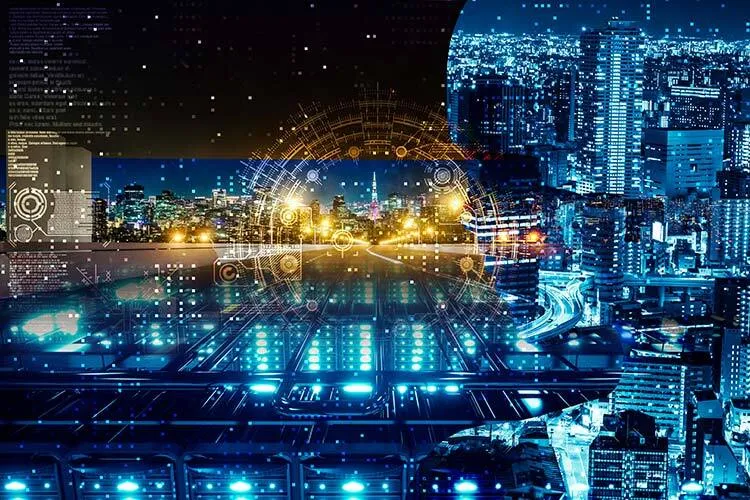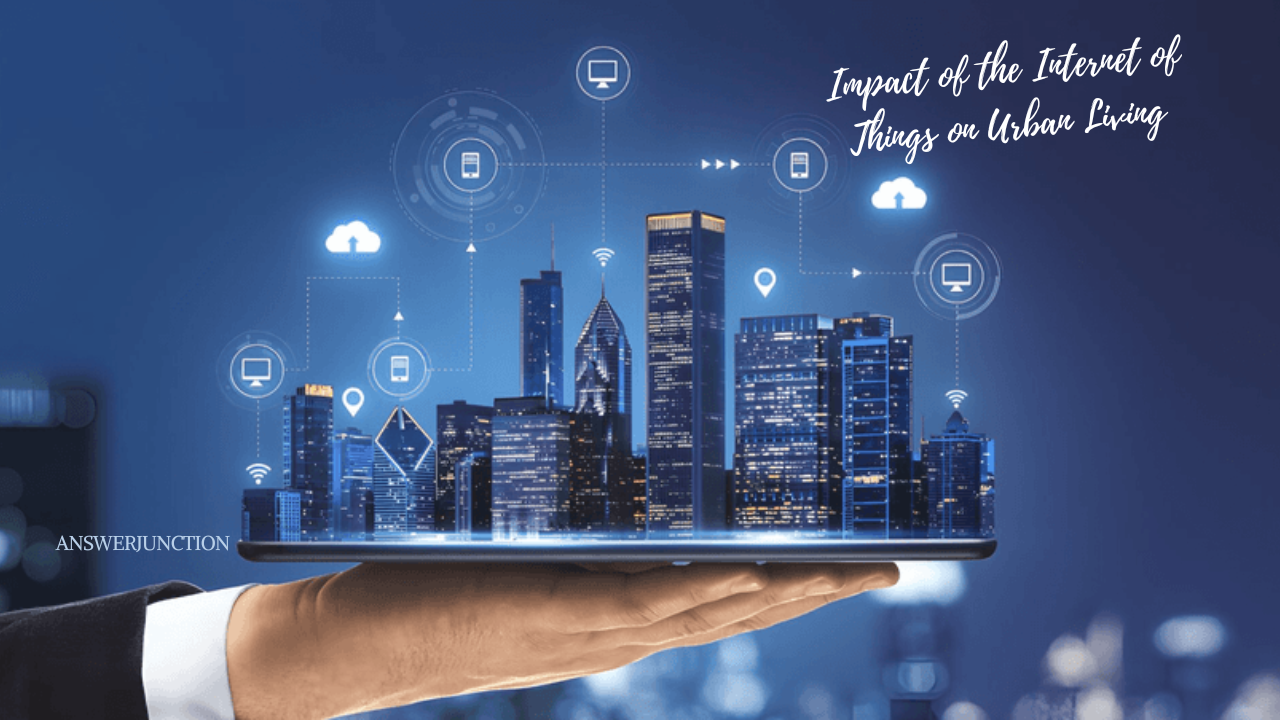The Internet of Things (IoT) has become a revolutionary force, transforming how we interact with our environments, particularly in urban settings. By connecting everyday devices to the internet, IoT enables seamless communication, data collection, and real-time analysis, fundamentally reshaping urban living. As cities grow denser and more complex, the integration of IoT technologies offers solutions to some of the most pressing challenges of modern urban life. This article explores the various impacts of IoT on urban living, examining its benefits, challenges, and the future of smart cities.
Enhancing Efficiency in Urban Infrastructure

One of the most significant impacts of IoT on urban living is the enhancement of infrastructure efficiency. Traditional urban systems, such as traffic management, waste disposal, and energy distribution, often operate in silos, leading to inefficiencies and wasted resources. IoT technologies enable the integration of these systems, allowing for smarter management and optimization.
For instance, smart traffic lights equipped with sensors can analyze real-time traffic conditions and adjust their timing accordingly, reducing congestion and improving overall traffic flow. Similarly, IoT-enabled waste management systems can monitor the fill levels of garbage bins and optimize collection routes, reducing operational costs and environmental impact. By leveraging real-time data, cities can enhance the efficiency of their infrastructure, leading to a more streamlined urban experience for residents.
Improving Public Safety and Security
IoT technologies are also playing a crucial role in improving public safety and security in urban areas. Cities are increasingly adopting smart surveillance systems equipped with IoT sensors that can detect unusual activity and alert law enforcement in real-time. These systems not only enhance crime prevention but also contribute to quicker response times during emergencies.
Additionally, smart lighting systems can improve public safety by automatically adjusting brightness levels based on the time of day or the presence of pedestrians. These systems can deter criminal activity while also saving energy. Furthermore, IoT can enhance disaster management efforts through real-time monitoring of environmental conditions, such as air quality and weather patterns. This proactive approach can help cities respond more effectively to natural disasters and health crises, ultimately ensuring the safety and well-being of their residents.
Revolutionizing Transportation and Mobility
Transportation is another area where IoT is making a profound impact on urban living. With the rise of smart transportation systems, cities can now manage their transportation networks more effectively. IoT devices can provide real-time data on public transit systems, allowing users to receive live updates on bus and train schedules. This transparency encourages the use of public transportation, reducing reliance on personal vehicles and subsequently decreasing traffic congestion and pollution.
Furthermore, the development of autonomous vehicles is closely tied to IoT technologies. These vehicles rely on a network of sensors and data analytics to navigate urban environments safely. As cities begin to integrate autonomous vehicles into their transportation systems, the potential for reduced traffic accidents and optimized traffic flow becomes a reality.
Moreover, ride-sharing services and apps have transformed urban mobility by leveraging IoT for efficient routing and passenger matching. Users can easily connect with nearby drivers, resulting in shorter wait times and lower transportation costs. This interconnectedness fosters a more efficient urban mobility ecosystem, catering to the diverse needs of city dwellers.
Transforming Energy Management
The integration of IoT technologies is revolutionizing energy management in urban areas. Smart grids, powered by IoT sensors, enable real-time monitoring of energy consumption patterns and facilitate better resource allocation. This enhanced visibility allows utility companies to manage energy distribution more effectively, reducing waste and improving sustainability.
Residents can also benefit from smart home technologies that monitor energy usage and suggest ways to optimize consumption. For instance, smart thermostats can learn user preferences and adjust heating and cooling accordingly, resulting in significant energy savings. Additionally, IoT can facilitate the integration of renewable energy sources, such as solar panels, into urban power grids, promoting sustainability and reducing dependence on fossil fuels.

Moreover, cities are exploring the potential of smart streetlights that adjust their brightness based on ambient light levels or pedestrian presence. These systems not only enhance public safety but also contribute to energy conservation, showcasing the multifaceted benefits of IoT in urban energy management.
Enhancing Health and Wellbeing
IoT technologies have the potential to significantly enhance the health and well-being of urban residents. Wearable devices, such as fitness trackers and smartwatches, enable individuals to monitor their health metrics in real-time, encouraging healthier lifestyles. Additionally, IoT can facilitate telemedicine, allowing patients to connect with healthcare providers remotely. This is particularly beneficial in densely populated urban areas where access to healthcare can be challenging.
Furthermore, smart cities can leverage IoT to monitor air quality and other environmental factors that impact public health. By providing real-time data on pollution levels, cities can inform residents about health risks and implement measures to improve air quality. For instance, urban planners can use this data to create more green spaces, which not only enhance aesthetic appeal but also improve air quality and promote mental well-being.
Promoting Community Engagement and Connectivity
The Internet of Things is also fostering greater community engagement and connectivity in urban areas. Smart city applications allow residents to participate in decision-making processes and engage with local government initiatives. For example, IoT-enabled platforms can facilitate community feedback on urban planning projects, ensuring that residents have a voice in shaping their environments.
Additionally, smart applications can connect residents with local resources and services, such as community events, volunteer opportunities, and local businesses. This sense of community fosters social connections and enhances the overall quality of urban living. By promoting active engagement, IoT technologies empower residents to take ownership of their communities and contribute to positive change.
Challenges of IoT in Urban Living
While the potential benefits of IoT in urban living are vast, there are also significant challenges that need to be addressed. One of the primary concerns is the issue of data privacy and security. As cities collect vast amounts of data through IoT devices, there is a risk of unauthorized access and misuse of personal information. To build trust among residents, cities must prioritize data protection and implement robust cybersecurity measures.
Additionally, the digital divide poses a challenge to the equitable implementation of IoT technologies. Not all residents have equal access to technology and the Internet, which can exacerbate existing inequalities. Policymakers must ensure that IoT initiatives are inclusive, providing access and support to marginalized communities.
Furthermore, the integration of IoT technologies requires significant investment in infrastructure and resources. Cities must navigate the complexities of upgrading existing systems while ensuring that new technologies are sustainable and scalable. This necessitates collaboration among various stakeholders, including government agencies, private companies, and community organizations.
The Future of Urban Living with IoT
As cities continue to evolve and embrace IoT technologies, the future of urban living looks promising. The ongoing advancements in IoT, artificial intelligence, and data analytics will enable cities to become smarter and more responsive to the needs of their residents. The concept of smart cities will continue to gain traction, driven by the desire for enhanced efficiency, sustainability, and quality of life.
In the coming years, we can expect to see further innovations in transportation, energy management, public safety, and community engagement. For instance, the rise of autonomous public transportation and the expansion of smart grids will transform how residents navigate their cities and consume energy. Moreover, the increasing use of augmented and virtual reality in urban planning will enable more immersive and participatory experiences for residents.
The Internet of Things is undeniably reshaping urban living, offering innovative solutions to the challenges faced by modern cities. From enhancing infrastructure efficiency to promoting community engagement, IoT technologies have the potential to create a more sustainable, connected, and vibrant urban environment. However, to fully realize these benefits, cities must address the challenges of data privacy, inequality, and infrastructure investment. By fostering collaboration among stakeholders and prioritizing inclusivity, urban areas can harness the power of IoT to improve the quality of life for all residents. As we look to the future, the impact of IoT on urban living will continue to evolve, paving the way for smarter, healthier, and more resilient cities.




